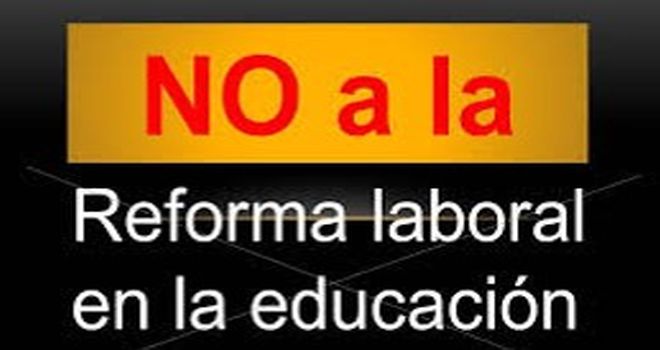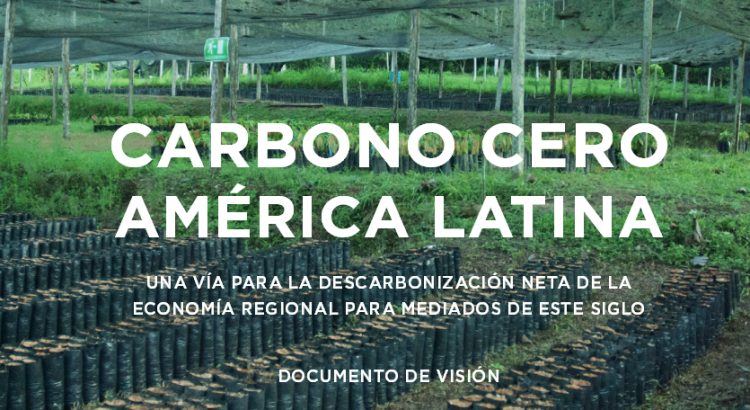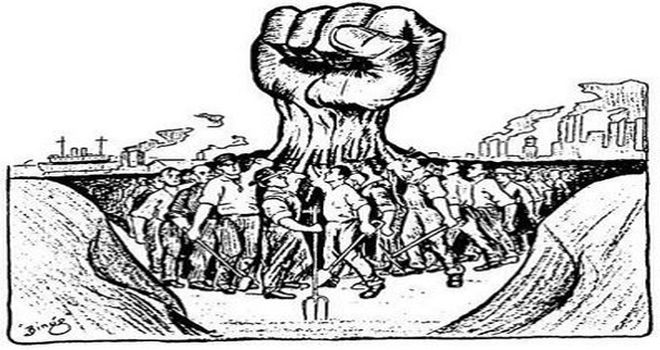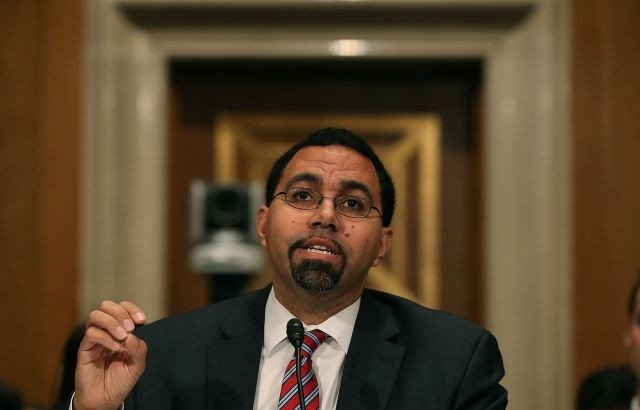Autor:Rafael Olivera Ávila
Asignatura Primera.- Una aberración llamarla así.
Peor que su antecesor (Emilio Chuayffet Chemor) al frente de la Secretaría de Educación Pública (SEP), el actual, Aurelio Nuño Mayer, ha resultado también “no idóneo”, ya que, sosteniendo contra viento y marea el dogma de la aplicación de los exámenes punitivos a los profesores que fueron escogidos al azar, apostándole a resultados adversos en estos, para así, desvirtuar aún más la tan deteriorada imagen del profesorado de manera generalizada, en su jugada, le salió el tiro por la culata. Toda vez, al conocerse los resultados, se evidencia que la gran mayoría del profesorado salió suficiente y más, en la clasificación determinada por el organismo evaluador, con un contundente 85 por ciento.
Se antoja pertinente ahondar en el título de estas Asignaturas para dilucidar lo que ha sido realmente la mal llamada “reforma educativa”. El vocablo eufemismo, en una de sus acepciones establece: “Palabra o expresión políticamente aceptable o menos ofensiva que sustituye a otra palabra de mal gusto o tabú, que puede ofender o sugerir algo no placentero o peyorativo al oyente. Los eufemismos son muy empleados en el lenguaje políticamente correcto para evitar posibles ofensas a grupos de individuos, o como instrumento de manipulación del lenguaje para hacer más fácil la aceptación por la masa de ideologías que, expuestas de otro modo, resultarían reprobables”.
En el caso del tópico referente a la “reforma educativa”, aseguro que es un eufemismo porque esta denominación es lo “políticamente correcto”, ya que, no les conviene aceptar que es una contrarreforma laboral, administrativa y hasta política, en donde, de acuerdo a la conceptualización de reforma educativa, dista mucho de serlo, por ende, veamos que significa realmente una reforma educativa. En un primer significado, reforma es “un arreglo, modificación o cambio cuyo objetivo es el de mejorar algo” (RAE). La acción y efecto de reformar o reformarse recibe el nombre de reforma. El verbo reformar está vinculado a modificar o enmendar algo.
Educativo, a su vez, es lo perteneciente o relativo a la educación, que puede definirse como el proceso de socialización de las personas. La educación permite que el individuo asimile o aprenda conocimientos, desarrollando una concienciación conductual y cultural. La noción de reforma educativa, por lo tanto, refiere a la modificación del modelo educativo con el objetivo de mejorarlo. Este tipo de iniciativas tiene múltiples aristas, ya que puede desarrollarse desde diferentes perspectivas y de acuerdo al análisis de la situación que haya realizado quienes impulsan las reformas. Luego entonces, la reforma educativa debiera impulsarse a partir de un amplio consenso social, ya que la educación atañe a la sociedad y nunca debe de depender de una ideología o del gobierno en turno.
Cuando la reforma educativa obedece sólo a los intereses de la autoridad del momento, suele tratarse de un emprendimiento político para difundir una visión sesgada de la realidad y para formar a las nuevas generaciones según el mensaje dominante. Más allá del componente político, la reforma educativa debe llevarse a cabo para actualizar los métodos de enseñanza y para adecuar las asignaturas a los tiempos actuales. No podemos ni debemos soslayar, al hablar de reforma educativa, de lo fundamental que es el modelo educativo propuesto desde la política educativa gubernamental. Por lo tanto, se hace imprescindible revisar qué se entiende por modelo educativo.
Un modelo educativo consiste en una recopilación o síntesis de distintas teorías y enfoques pedagógicos, que orientan a los docentes en la elaboración de los programas de estudio y en la sistematización del proceso de enseñanza-aprendizaje. Ante todo esto, la realidad se impone, es muy otra. Ha sido una contrarreforma laboral, administrativa y política, perversamente maquinada y enjaretada en los artículos tercero y 73 constitucionales.
Apostándole en todo momento a una evaluación punitiva nefasta que pretendía predominantemente descalificar a los maestros para correrlos del servicio docente.
Evidentemente, todavía no les cuajó la artimaña, partieron de una premisa falsa. Es cuanto.
Fuente del artículo:La Jornada Baja California En http://jornadabc.mx/opinion/14-03-2016/el-eufemismo-de-la-reforma-educativa
Fuente de la imagen:http://insurgenciamagisterial.com/wp-content/uploads/2016/03/mars-sente.jpg













 Users Today : 6
Users Today : 6 Total Users : 35460359
Total Users : 35460359 Views Today : 9
Views Today : 9 Total views : 3419109
Total views : 3419109